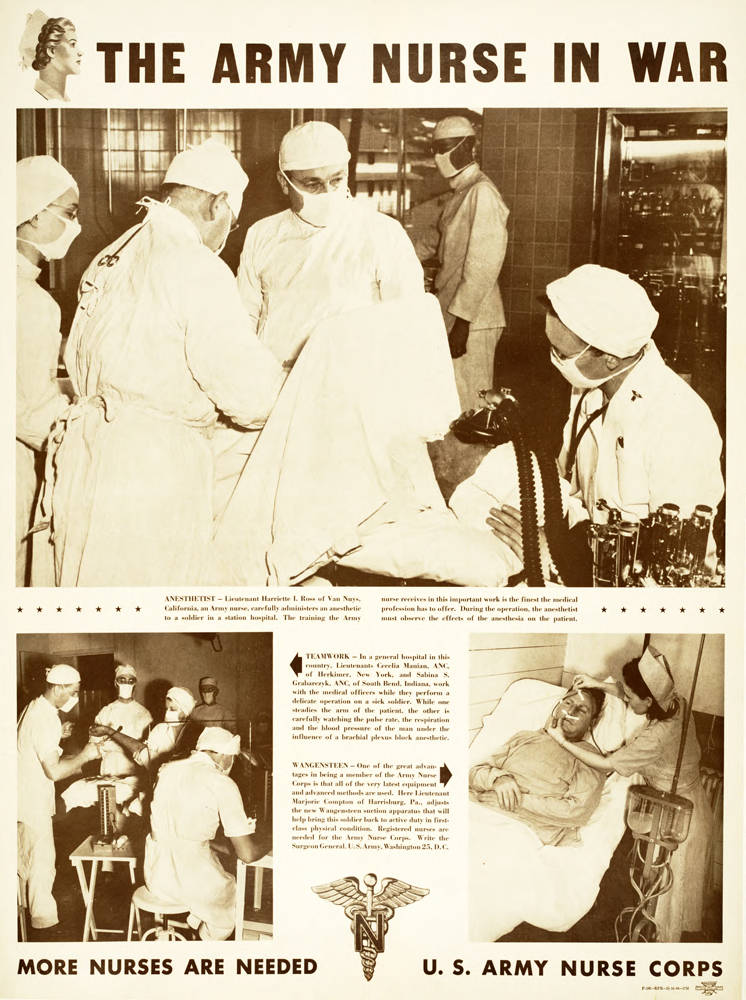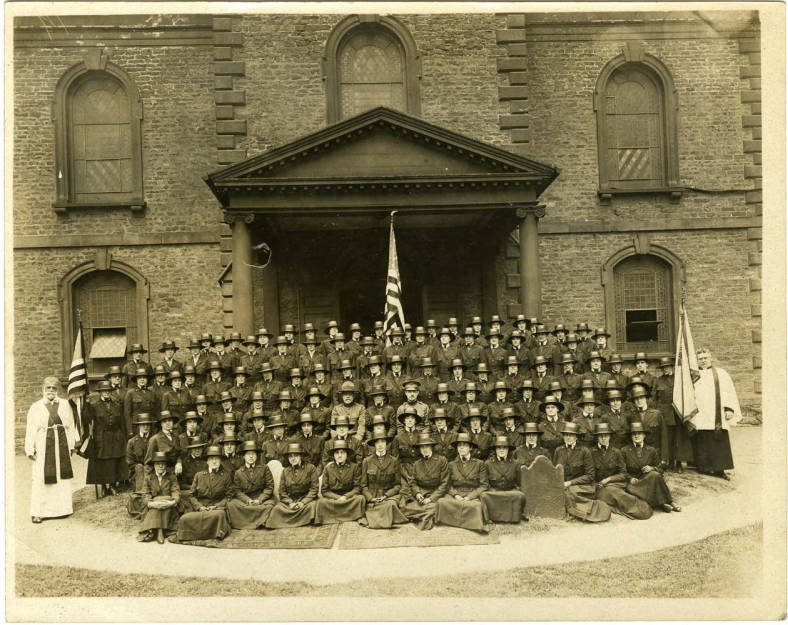Army Nurse Corps
The Army Nurse Corps was formally established by Congress in 1901 to provide nursing staff and support to the United States Military. Prior to this, much of the nursing services for the Armed Forces was made up of female volunteers through various organizations. It wasn’t until the lobbying of Dr. Anita Newcomb McGee before an official Nurse Corps was established for the military.
History of the Army Nurse Corps
 During the American Revolution, women volunteers tended to the sick and wounded of Washington’s Army. Although these women were not nurses in the modern sense, they were trailblazers for later generations when official nursing schools were established. In the American Civil War, the United States Sanitary Commission provided nursing services to Union troops. Dorthea Dix was named superintendent of nurses for the Union Army and those who served with her were considered civilian employees.
During the American Revolution, women volunteers tended to the sick and wounded of Washington’s Army. Although these women were not nurses in the modern sense, they were trailblazers for later generations when official nursing schools were established. In the American Civil War, the United States Sanitary Commission provided nursing services to Union troops. Dorthea Dix was named superintendent of nurses for the Union Army and those who served with her were considered civilian employees.
The need for Army nurses became apparent again during the Spanish American War. Dr. Anita Newcomb McGee, founder of the Army Nurse Corps, began training volunteer nurses for army and navy service after the outbreak of the war. For her organizing efforts, she was appointed Acting Assistant Surgeon in the United States Army where she was placed in charge of the Army’s nursing staff. After the war, McGee lobbied to have a permanent nursing corps, which would become the Army Nurse Corps.
Army Nurse Corps in the Present Day
Since then, the Army Nurse Corps have been deployed all over the world supporting troops during conflict and participating in humanitarian missions. The size of the corps has varied throughout the years, with over 20,000 nurses recruited during World War I and growing to over 54,000 members during World War II. Today more than 11,000 men and women serve in the United States Army Nurse Corps and it exists as a significant part of the Army Medical Department.
To learn more about medical services in the military, visit our newest exhibit, Tet and the Battle of Hue. Explore the battle through 3D interactive images and learn about medical treatment that was available during the fight.
Share this story on Social Media!
To learn more about the Army Nurse Corps, read these books:
The Army Nurse Corps, Progressive Management, 2016
Tomblin, Barbara Brooks, G.I. Nightingales, Lexington: Univ Press Of Kentucky, 2001
Conkling, Winifred; Kuo, Julia (ILT), Heroism Begins with Her: Inspiring Stories of Bold, Brave, and Gutsy Women in the U. S. Military, New York: Harper Collins, 2019
To learn more about the life of Dr. Anita Newcomb McGee, see:
Conkling, Winifred, and Julia Kuo. Heroism Begins with Her: Inspiring Stories of Bold, Brave, and Gutsy Women in the U. S. Military. First ed. New York, NY: HarperCollins Children's Books, An Imprint of HarperCollins, 2019.
Sharf, Frederic A, Michael Rhode, Michael Rhode, James Thomas Hamilton Connor, National Museum of Health and Medicine (U.S.), James Thomas Hamilton Connor, and National Museum of Health and Medicine (U.S.). "American Angels of Mercy" 1904: Dr. Anita Newcomb McGee’s Pictorial Record of the Russo-Japanese War. Washington, D.C.: National Museum of Health and Medicine, 2001.
